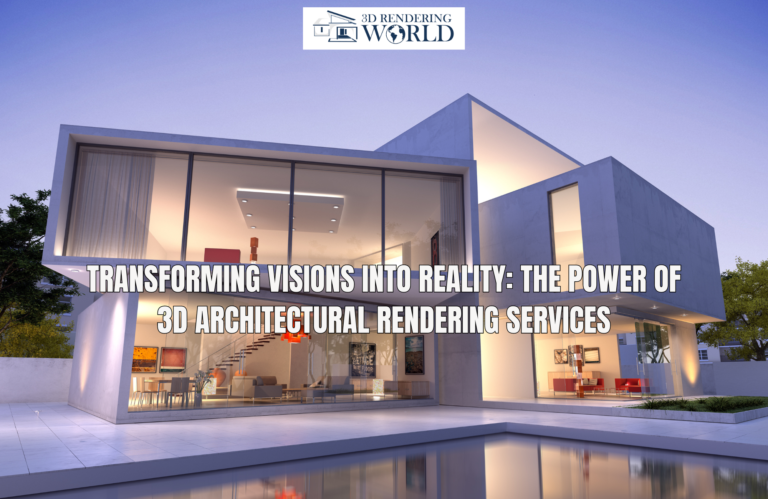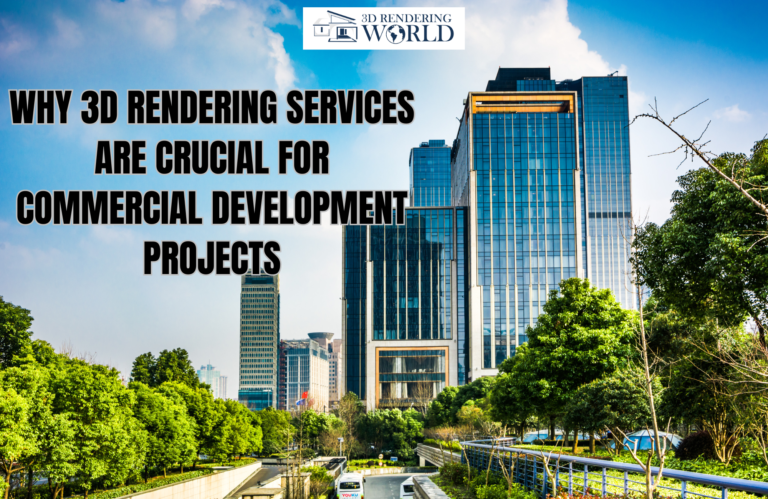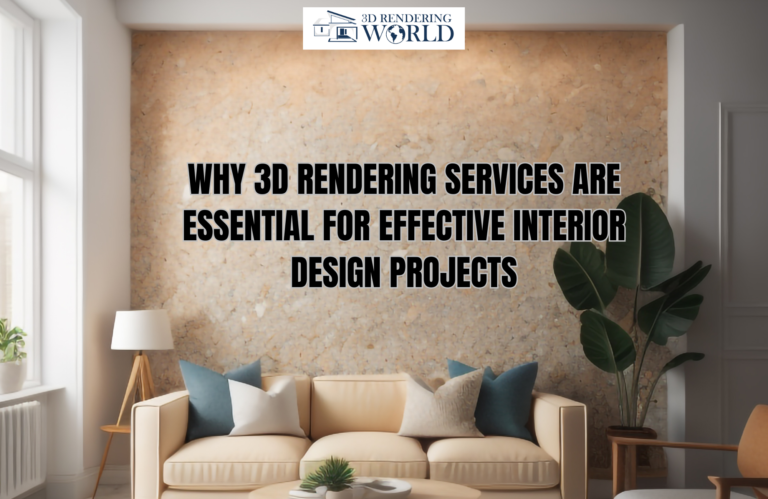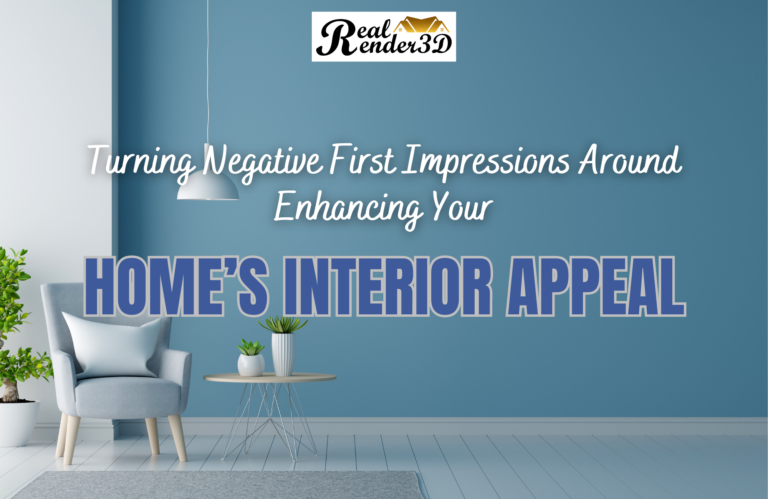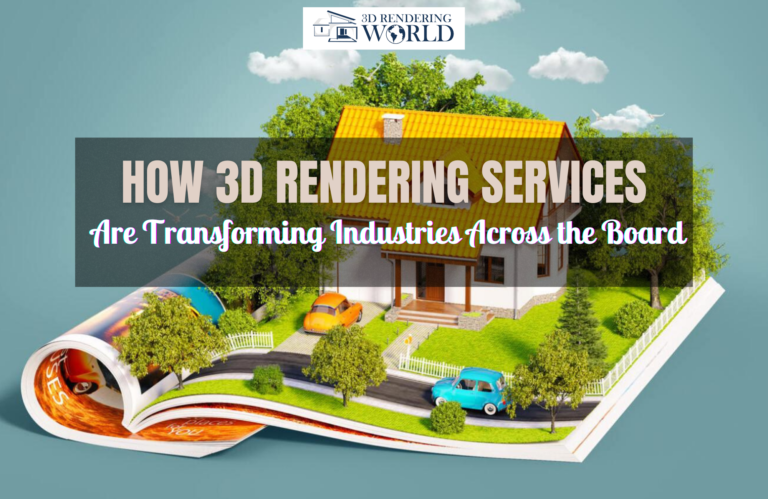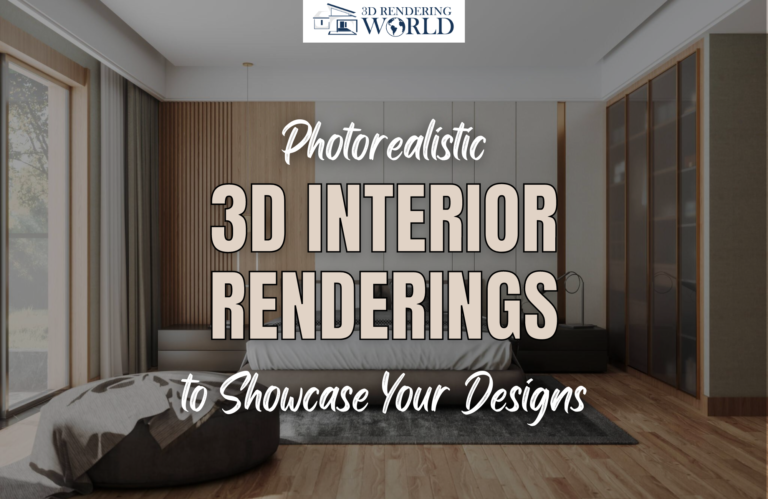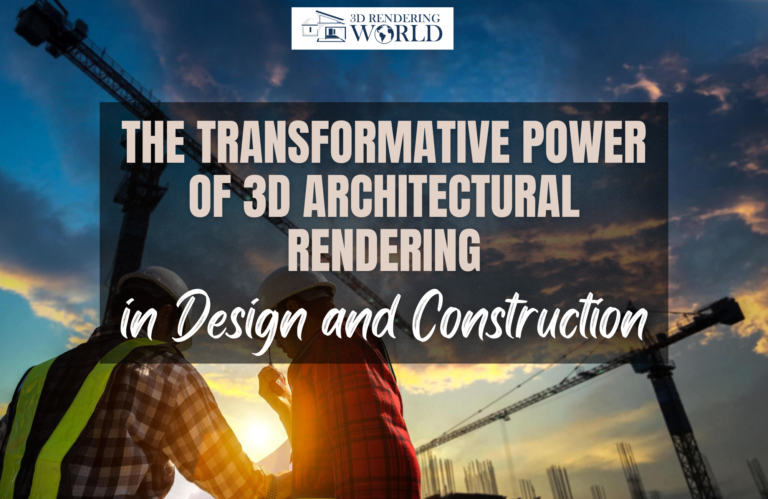Introduction

Architectural rendering has evolved by leaps and bounds in recent years. With the rise of 3D rendering services and innovative new technologies, architects now have more tools than ever to bring their designs to life digitally before construction even begins. In this blog post, we will explore the top 8 trends that are transforming architectural visualization and allowing designers to create remarkably photorealistic, stunning architectural renders.
What is 3D Architectural Rendering?

3D architectural rendering is the process of creating three-dimensional visual representations of architectural designs using 3D modeling and rendering software. It provides a realistic visualization of what the finished building or interior space will look like when completed.
3D renders are generated from 3D models that are created with architecture-specific modeling tools. Once the 3D model is complete, materials, lighting, textures and other details are added to make the design look real. The goal of 3D architectural rendering is to showcase proposed designs with comprehensive photorealistic visuals.
Benefits of 3D Architectural Rendering
There are many advantages to using 3D rendering in architectural design workflows:
- Visualize designs in realistic detail before construction
- Showcase design concepts to clients in an impressive visual format
- Make modifications and experiment with materials more easily
- Identify and resolve spatial issues before beginning construction
- Create compelling marketing materials and visuals
- Reduce surprises, errors and costs during the building process
These benefits make integrating 3D rendering an invaluable part of the architectural design process. As technology continues advancing, 3D architectural rendering is becoming more immersive, faster and easier to implement.
Key Trends in Architectural Rendering
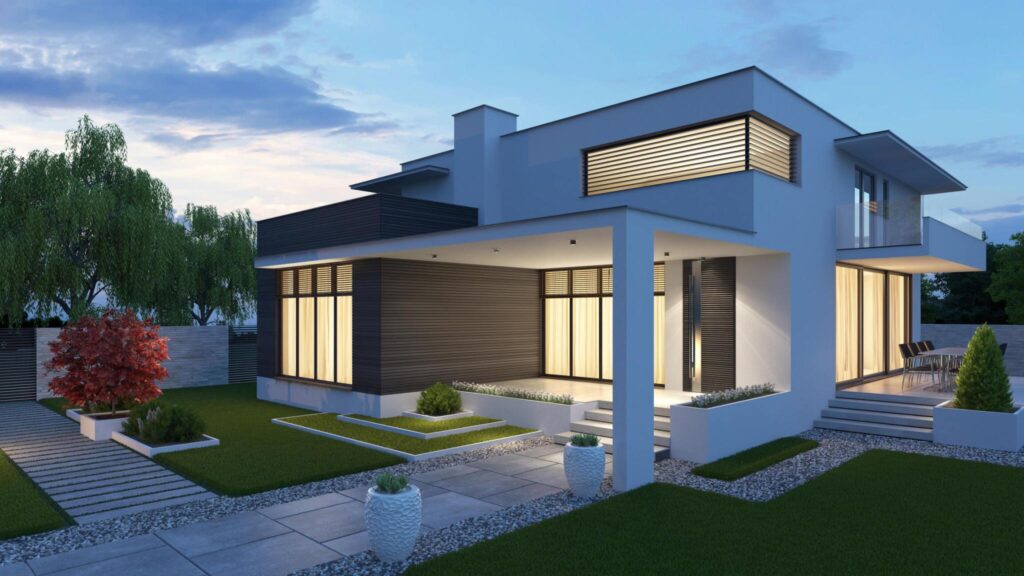
Let’s look at some of the noteworthy innovations and trends that are redefining architectural visualization services:
- Greater Photorealism
Today’s architectural renders are reaching astonishing new levels of realism. Advanced rendering engines like V-Ray, coupled with powerful GPUs, can closely simulate real-world lighting, reflections, textures and more. The materials, finishes and objects in renders are modelled in lifelike detail for remarkably convincing visuals.
- Faster Rendering Times
Innovations in rendering technology and computing power have significantly reduced the time it takes to generate photorealistic 3D architectural visualizations and walkthroughs. What once took hours or days can now be accomplished in minutes or hours, accelerating project timelines.
- Enhanced VR and Immersion
VR technology is transforming architectural visualization. Designers can immerse clients in their building designs well before construction using interactive VR walkthroughs of 3D-rendered environments. This creates exciting new opportunities for user testing and design feedback.
- Expanded Camera Capabilities
Advanced camera simulation functionalities in rendering engines mimic the properties of real-life camera lenses and photographic techniques. This allows for renders that look like they were captured professionally on camera for added realism.
- Detailed Nature Rendering
High-quality nature assets including vegetation, landscapes, trees, plants and foliage can be added to exterior renders for realistic outdoor environments. This softer natural detailing contrasts with hard architectural features.
- Increased Use of HDRIs
HDRI (high dynamic range imaging) uses real-world lighting data to light scenes and renders for authenticity. As HDRI use grows, 3D visualizations are appearing more true to life.
- AR and MR Integration
Emerging augmented reality (AR) and mixed reality (MR) tools that integrate rendered models into real-world views provide exciting new ways to visualize designs in context before construction. This supports remote collaboration and on-site evaluation.
- Cloud Rendering Services
Cloud rendering farms provide scalable, fast rendering capabilities without the need to invest in expensive hardware. Cloud services like RenderCore are making high-quality rendering quick and accessible.
These trends are giving architects and 3D rendering studios incredible new capacity to create visualizations that capture the signature aesthetic and ambience of designs with realism unlike ever before.
Photorealistic 3D Rendering Enhances Architectural Visualization
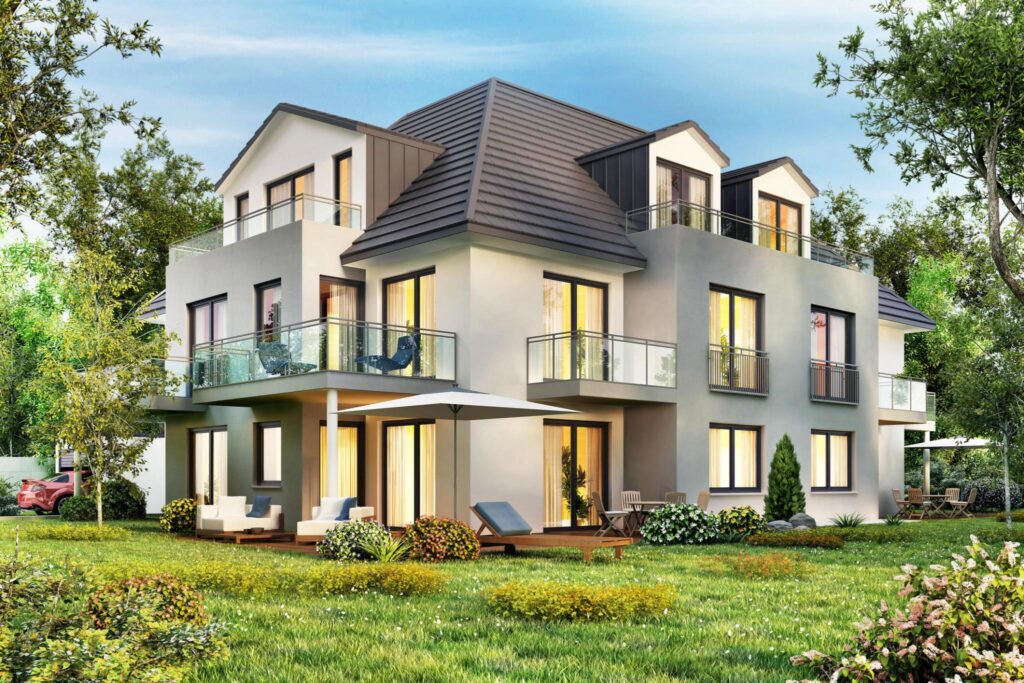
From material textures to lighting to landscaping, the latest 3D interior rendering tools make it possible to visualize architectural designs with a level of detail and realism that was previously difficult to achieve. Technological advances have brought architectural rendering a long way from hand drawings and draft models.
For architecture firms, integrating services like 3D interior rendering and 3D exterior rendering early in the design process allows iterating and experimenting digitally to hone designs more effectively. Photorealistic visuals also assist in winning projects by enabling clients and stakeholders to fully experience spaces before they are built.
Clients are typically more emotionally invested and excited by designs when they are brought to life through compelling 3D-rendered visuals rather than looking at static 2D drawings. Since a picture is worth a thousand words, detailed 3D renderings are incredibly powerful presentation tools. They create confidence by showing that designs are well-planned and visualized.
Creating Realistic 3D Renders
The key to crafting incredible 3D architectural renders is realism. Images need to look almost indistinguishable from photographs. Here are some tips and techniques 3D rendering professionals use to achieve realism:
- Use accurate 3D modelling dimensions based on floor plans and references
- Add authentic, high-resolution textures for surfaces and objects
- Replicate real-world lighting qualities and intensities
- Create texture imperfections like wear, stains and dirt
- Model furniture and décor to scale
- Use depth of field, lens effects and motion blur for camera realism
- Integrate entourage like people, vehicles and vegetation
- Simulate nature effects like rain, snow and wind
- Animate details like flowing drapes, candles and flowing water
Advanced tools like Redshift, V-Ray, and Blender coupled with artistic expertise in lighting, materials, textures and camera work takes photorealism to the next level. Natural imperfections and details that mimic real-world randomness and imperfections are what make the difference in crafting jaw-dropping 3D architectural renderings.
Benefits of Realistic 3D Renders for Architects
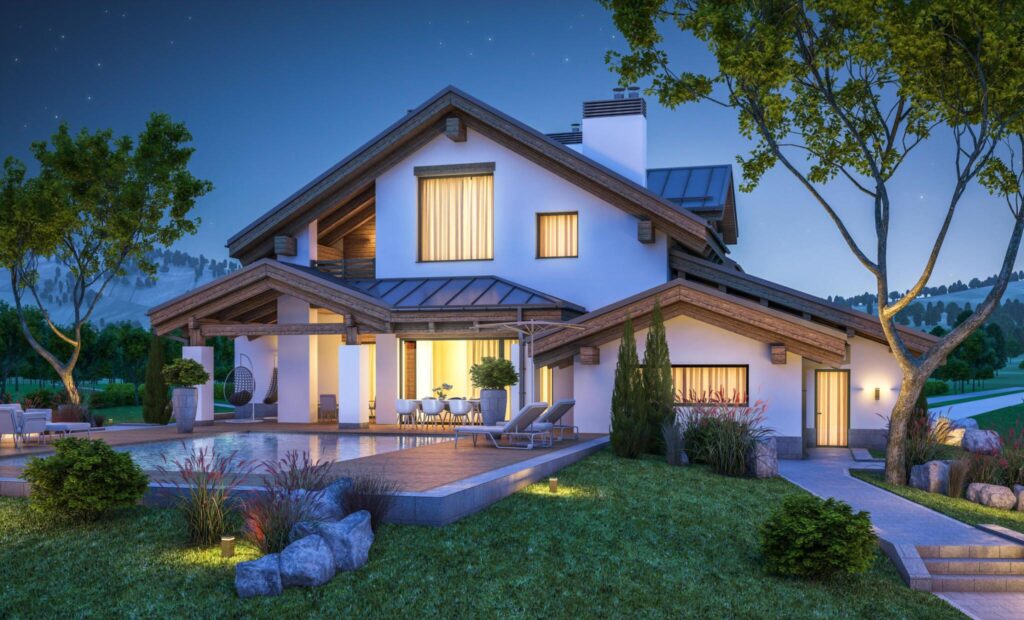
Investing in high-quality, photorealistic 3D rendering for architectural projects has many advantages:
- Enables clients to fully visualize the end result before construction
- Creates an emotional experience that resonates more than plans or models
- Provides invaluable design, planning and lighting feedback opportunities
- Allows showcasing designs in their best possible light
- Assists with identifying and troubleshooting spatial issues
- Facilitates design experimentation with materials and lighting
- Reduces surprise variables during the construction process
- Provides content for marketing materials, proposals, websites and portfolios
- Elevates brand image and showcases design capabilities
For architects, realistic renders are an integral part of the design process, not just a one-off deliverable. They provide vital visualization support from early concept to pre-construction.
Conclusion
These are just some of the top trends that are enabling architecture studios to produce stunning, photoreal 3D rendered visuals that capture designs in lifelike detail. Innovations in 3D architectural rendering software, GPU processing power, VR tools and cloud rendering services are completely transforming architectural visualization.
As technology progresses, 3D rendering will become increasingly accessible, faster, and more immersive. The future is bright for architectural firms looking to leverage these cutting-edge capabilities early in their design workflows to maximize realism, streamline workflows and strengthen client presentations.
To learn more about how 3D rendering services can transform your architectural visuals, contact our 3D visualization experts today!
Frequently Asked Questions
Some key benefits include: visualizing designs in realistic detail before construction, making modifications more easily, resolving spatial issues early on, creating compelling visual materials for clients, and reducing surprises during construction.
Some advances in 3D rendering tech include greater photorealism through more advanced software and hardware, faster rendering times due to innovations in computing, expanded VR and AR capabilities for more immersive visuals, enhanced camera simulation features, and accessible cloud rendering services.
Photorealism refers to architectural renderings and visuals that are extremely realistic, with qualities like textures, lighting, shadows and materials modeled to be near indistinguishable from real life. The goal is for 3D renders to look like actual photographs.
Adding detailed natural elements like plants, trees, foliage and other landscaping to an exterior architectural visualization can greatly enhance realism. The contrast between these softer natural details and the hard architectural geometry and lines complements the overall image.
Virtual reality (VR) allows clients to immerse themselves in a 3D rendered architectural environment using a headset. Augmented reality (AR) overlays 3D rendered models onto real-world camera views on a tablet or mobile device to evaluate designs in context.
Adding imperfections like dirt, wear, stains, damage, asymmetry and other true-to-life randomness to 3D rendered architecture and objects makes them appear more believable and less synthetic or “too perfect”. This captures authenticity.
By enabling issues with lighting, proportions, surfaces and spatial configurations to be identified and addressed digitally before physical construction, 3D rendering gives architects and clients more design insight earlier to reduce unexpected problems emerging during the build itself.
Showcasing designs through professionally done, photorealistic 3D renderings helps instill confidence in architecture clients that their vision will be brought to life effectively. This capability to deliver standout visuals is key for making an impression over less tech-savvy competitors.


